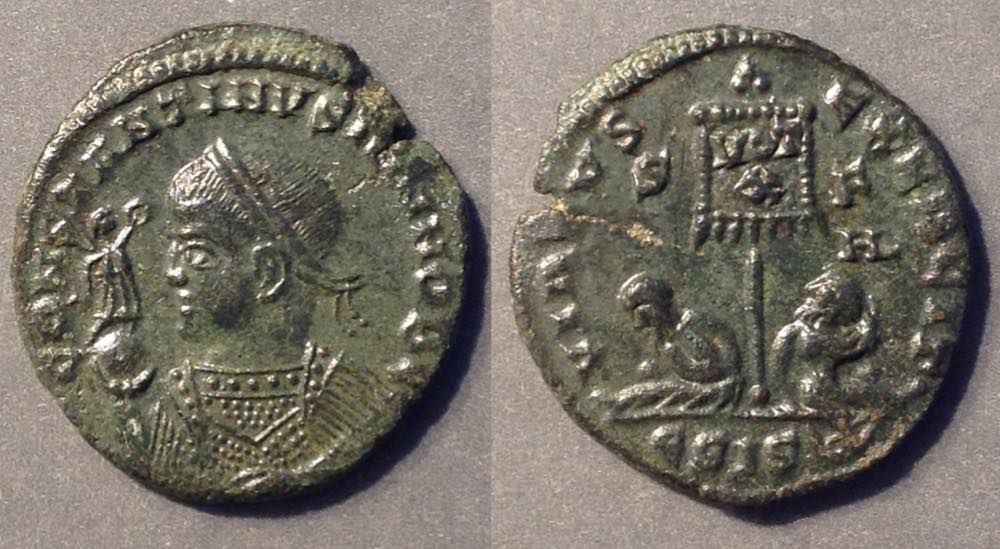 Coins of the Roman Emperor Constantine II (317-340)
Coins of the Roman Emperor Constantine II (317-340)All his reverse types of bronze coins.
(Skip down to the images of each type.)
1&2) Types as Caesar (317-337) Table 1 and Table 2 (VOTA types).
3) Types as Augustus (337-340) Table 3.
4) His extremely rare fractional-denomination types from Trier (Table 4).
(Click the image for more about the coin to the right.)
(There are similar pages for coins of Constans and Constantius II.)
What's in the tables? The tables below lists a reverse type set for Constantine II in AE. Images are below. The same basic reverse design and legend from different mints is regarded as one type. My use of the terms type and variety is discussed below. The primary references are RIC VII (for him as Caesar) and RIC VIII (as Augustus), but many types are issued from many mints and with several obverses and would not have a unique RIC ID number, so I have chosen to use Failmezger numbers (given as "Fxyz") because his ID numbers are for reverse types which is what I am lisiting. What this page contributes is the extraction of the reverse types of one emperor--Constantine II.
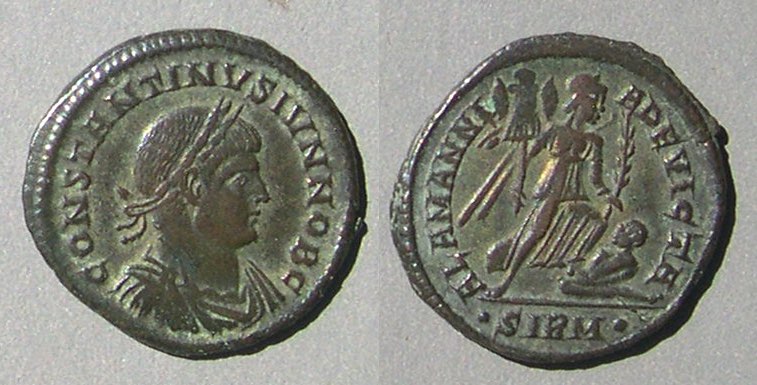 ALAMANNIA DEVICTA, Victory right holding trophy and palm branch, spurning captive
ALAMANNIA DEVICTA, Victory right holding trophy and palm branch, spurning captive CLARITAS REIPVB, Sol standing
CLARITAS REIPVB, Sol standing CONSTAN/TINVS/CAESAR
CONSTAN/TINVS/CAESAR GLORIA EXERCITVS, two soldiers and two standards.
GLORIA EXERCITVS, two soldiers and two standards.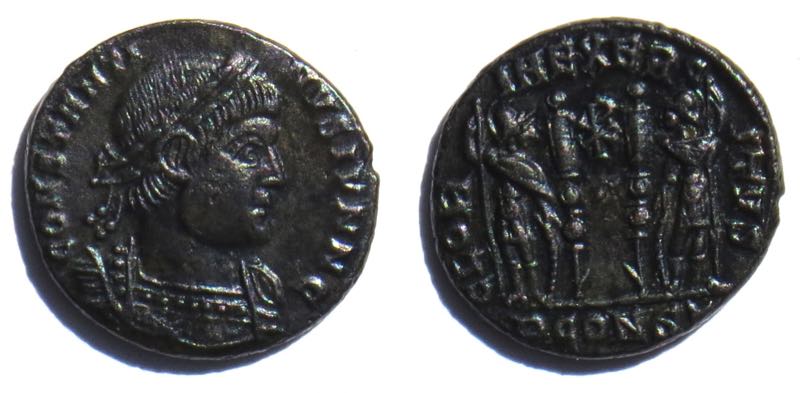 An important and rare variety with an early Christian symbol.
An important and rare variety with an early Christian symbol.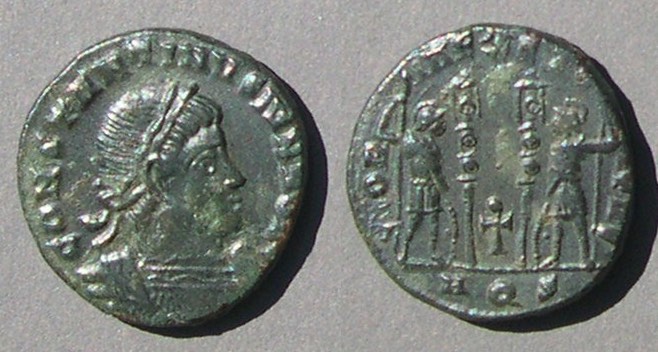 Another important variety with an early Christian symbol.
Another important variety with an early Christian symbol.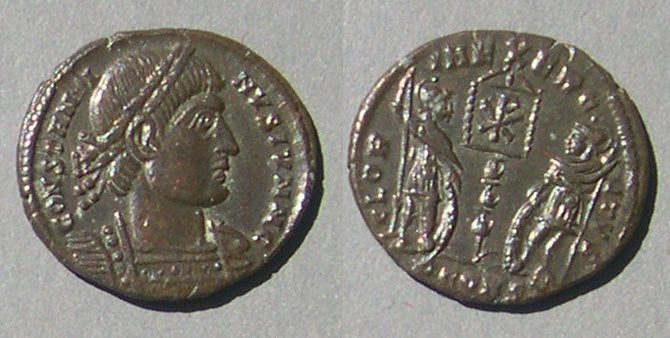
 PRINCIPI IVVENTVTIS, Emperor standing right with spear and globe
PRINCIPI IVVENTVTIS, Emperor standing right with spear and globe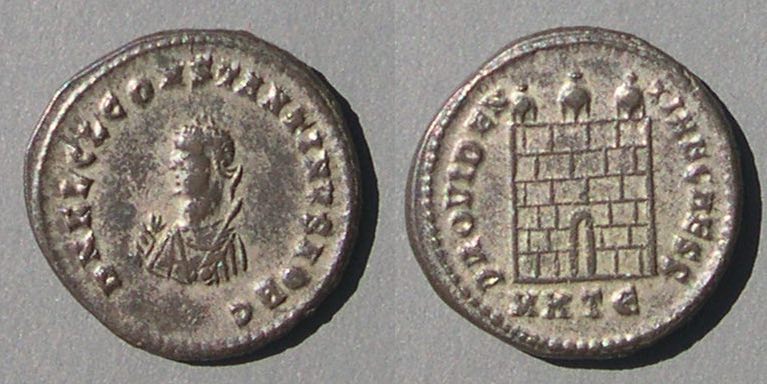 PROVIDENTIAE CAESS, campgate (city gate)
PROVIDENTIAE CAESS, campgate (city gate)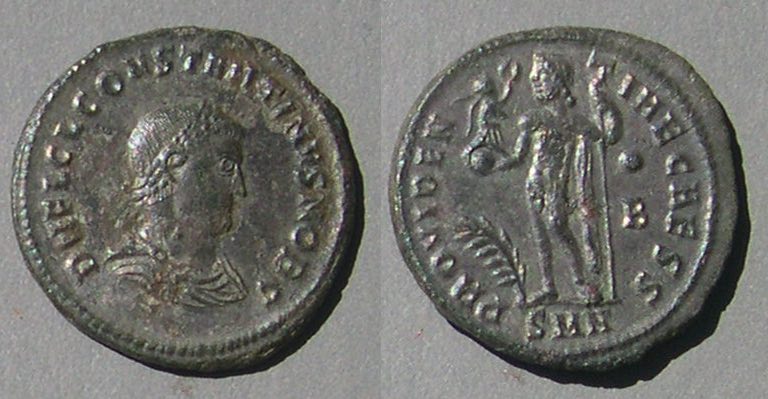 PROVIDENTIAE CAESS, Jupiter standing left, holding Victory on globe
PROVIDENTIAE CAESS, Jupiter standing left, holding Victory on globe
 [No photo for Constantine II. Here is one of the type for Constantine].
[No photo for Constantine II. Here is one of the type for Constantine]. VICTORIA CAESS, Victory left
VICTORIA CAESS, Victory left
 VIRTVS EXERCIT, X-like design ("camp plan") with Sol standing
VIRTVS EXERCIT, X-like design ("camp plan") with Sol standing VIRTVS EXERCITI, trophy with two captives
VIRTVS EXERCITI, trophy with two captives VIRTVS EXERCITI, trophy with two captives
VIRTVS EXERCITI, trophy with two captives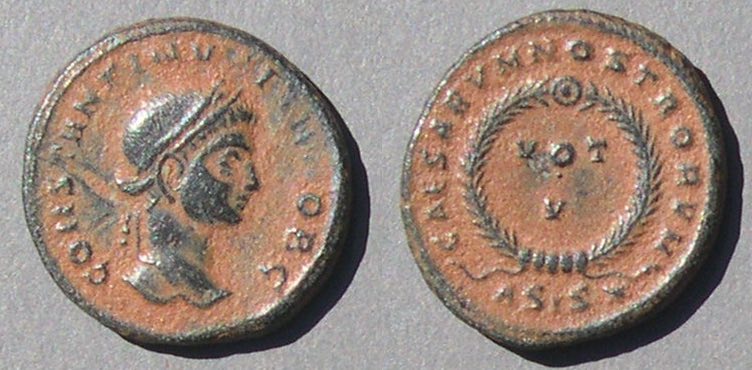 VOT
VOT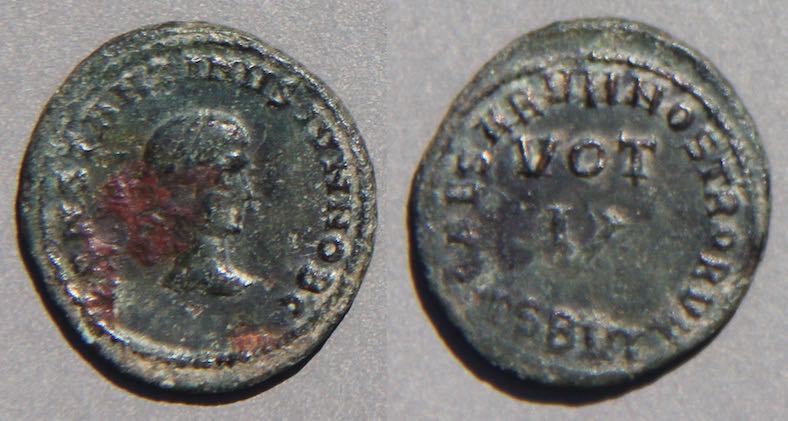 VOT
VOT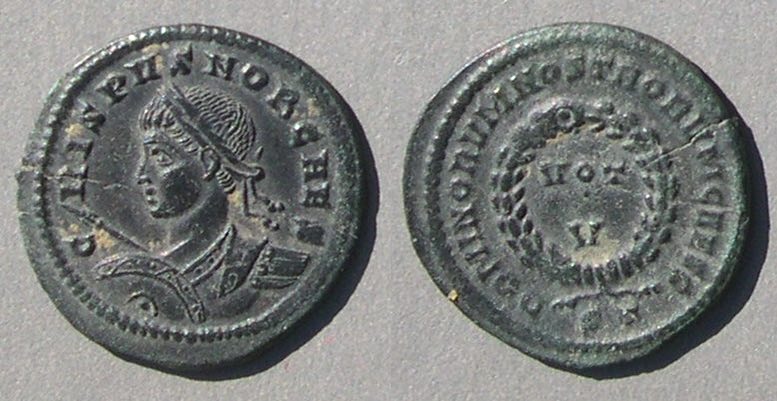 [no image for Constantine II. This one is of Crispus]
[no image for Constantine II. This one is of Crispus]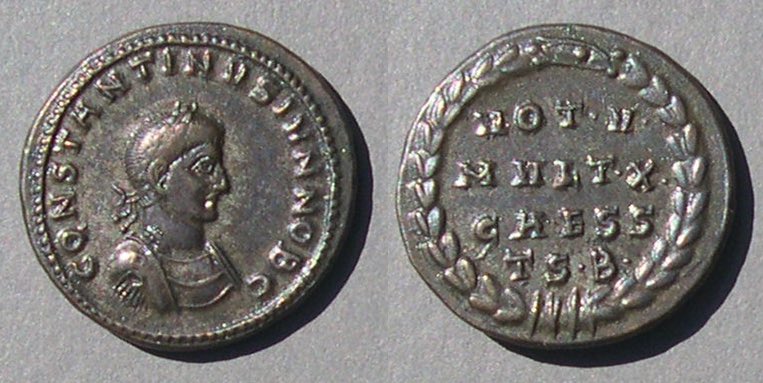 VOT V
VOT V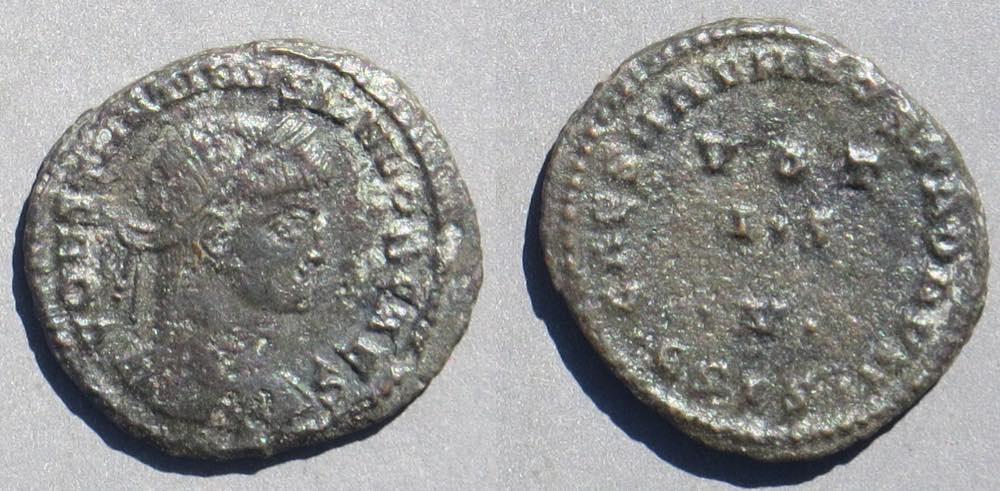 VOT
VOT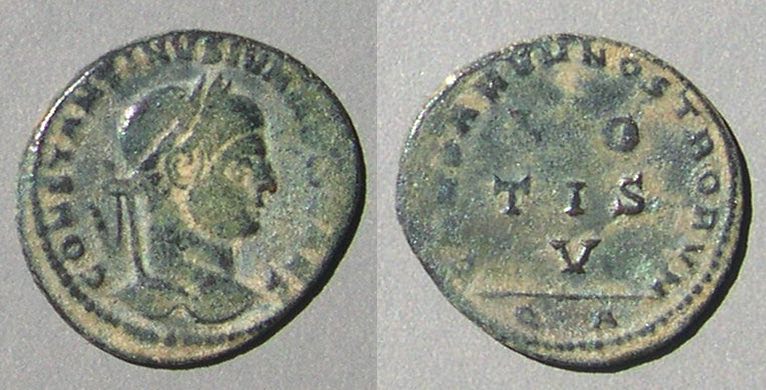 VO
VO VOT
VOT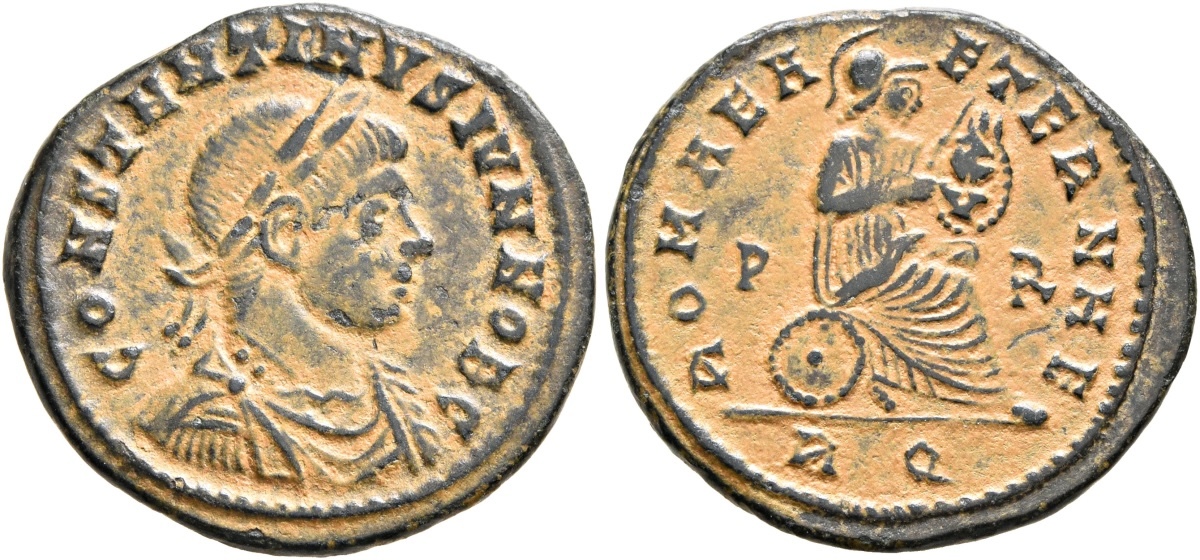 X
X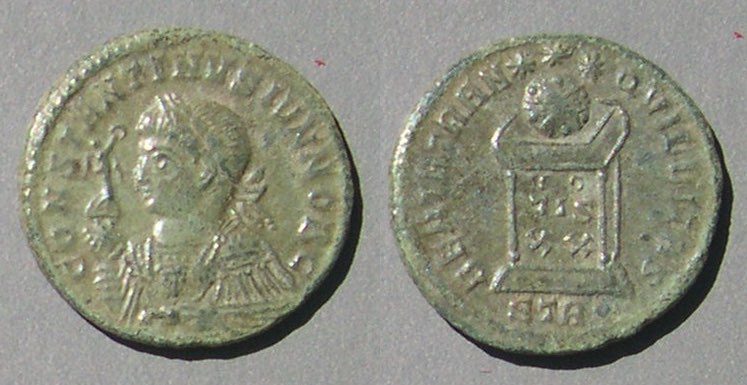 VO
VO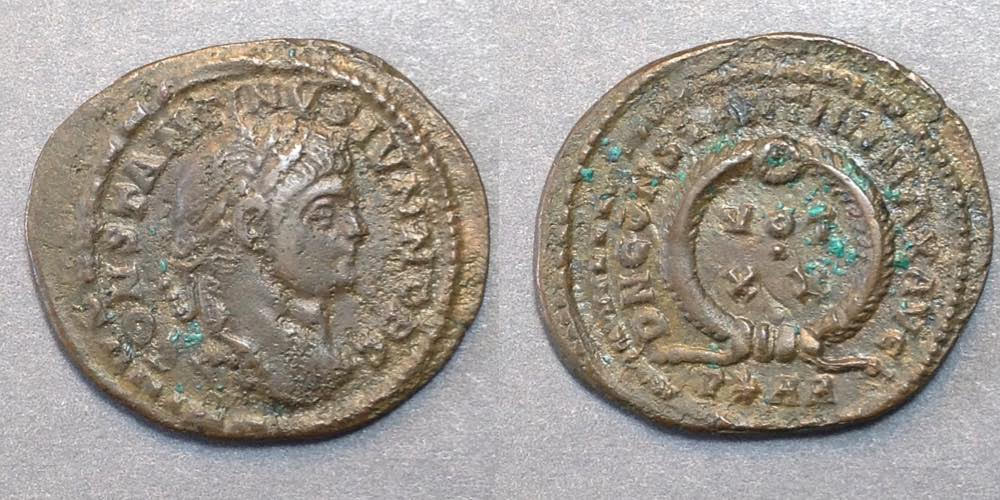 VOT
VOT VOT
VOT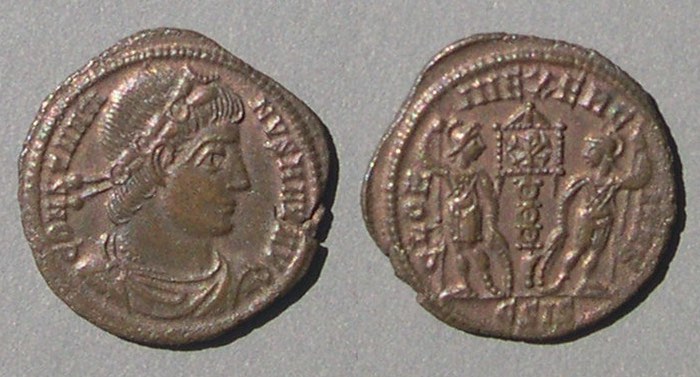
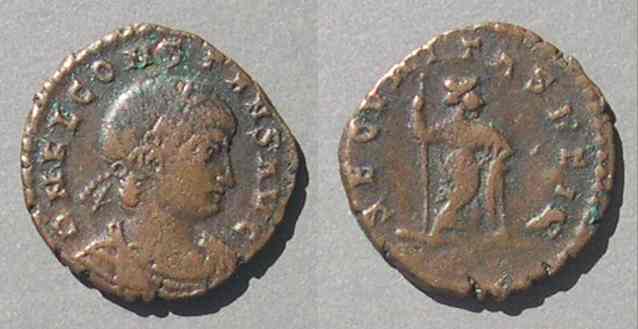 [No photo for Constantine II. Here is one for Constans}
[No photo for Constantine II. Here is one for Constans}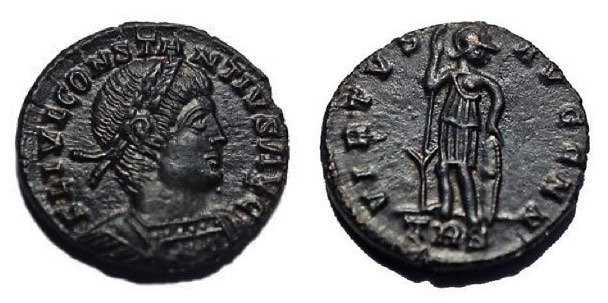 [no photo for Constantine II. Here is one for Constantius II.]
[no photo for Constantine II. Here is one for Constantius II.]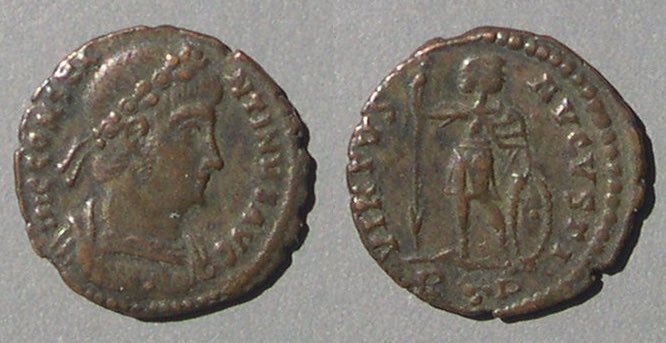 VIRTVS AVGVSTI, soldier holding spear and shield.
VIRTVS AVGVSTI, soldier holding spear and shield.